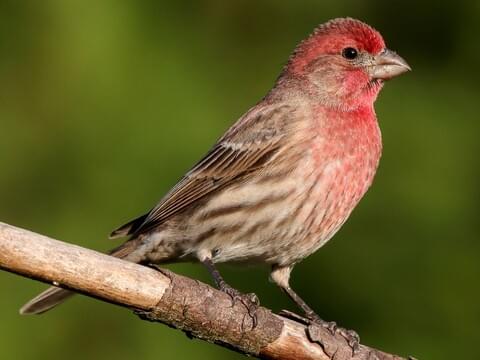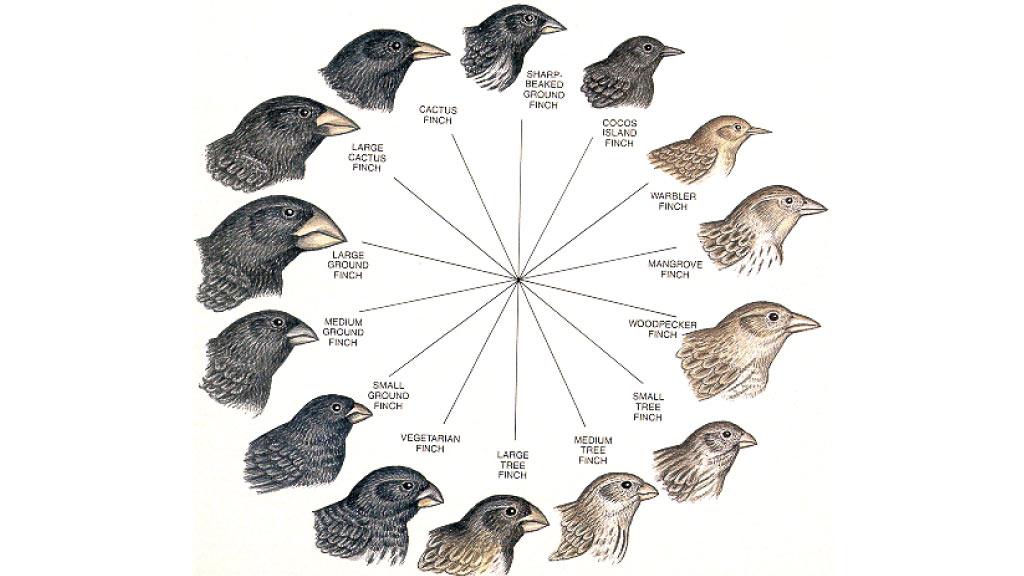In a Population of Finches Birds With Small Thick Beaks
Northern lapwing Vanellus vanellus R. The findings suggest that the male birds beak shape evolved in response to the birds competition for mates.

Identifying Darwin S Finches Galapagos Conservation Trust
In other words beaks changed as the birds developed different tastes for fruits seeds or insects picked from.

. Michael Woodruff CC BY-NC-SA 20. The figure in this study shows the distribution of beak depths measures of beak size for the islands medium ground finches. Up to 24 cash back c.
The big-beaked finches just happened to. Only one bird a female medium ground finch out. Black-bellied plover Pluvialis squatarola.
This activity explores the concepts and research presented in the short film The Origin of Species. Natural Selection was based upon the fittest for. Fortis small and large and G.
A small population of birds lived on an island. The most common and safest method is with a motorized Dremel drill. The family Charadriidae includes the plovers dotterels and lapwings.
The researchers found that adult male birds had the longest sharpest beaks and that the birds put them to use in jousting with rivals as part of a courtship ritual. The sword-billed hummingbird which lives in the northern Andes Mountains is the only bird with a beak longer than its body. They are small to medium-sized birds with compact bodies short thick necks and long usually pointed wings.
Variations already existed prior to the droughts. The warbler finch is the oldest species and the small ground finch is the most recent species to evolve. A drought in 1977 however reduced seed availability.
Once only found in the American Southwest the House Finches were introduced to the East by a New York pet-shop owners illegally selling finches. Magnirostris captured at El Garrapatero in 20042006. So the birds that were the winners in the game of natural selection lived to reproduce.
They are found in open country worldwide mostly in habitats near water. This medium-sized finch is a native to western North America but today it is found throughout the United States and Hawaii. Evolutionary biologists Rosemary and Peter Grant spent four decades tracking changes in body.
PC1 explained 956 of the total variation in beak length loading0964 beak depth 0986 and beak width 0983. These adaptations make them more fit to survive on available food. Over time the population of finches grew pretty large.
The tip of the black skimmers lower mandible is so narrow that water resistance against it is almost zero. The ground-finch Geospiza has a thick beak adapted to feeding on a variety of crunchy seeds. Up to 24 cash back insectswhilefincheswiththickclawOlikebeakslivedonislandswheretheyusedtheirbeaks.
This population had a lot of variation in beak size and shape. They are long-winged and generally dull-looking unless seen at close range when the pinkish hues and combinations of brown gray and black can be seen. It was introduced in New York in 1940 when illegal caged birds were.
Beak size is represented by PC1 calculated from all the birds combined. These include crossbills Evening and Pine Grosbeaks redpolls and siskins. So-called cactus finches boast longer more pointed beaks than their relatives the ground finches.
Rosy-finches are the highest-altitude breeding birds throughout most of their range. D The population of insects that can be killed by pesticides falls. During the time that has passed the Darwins finches.
What was the adaptation of the population. Ten species have been recorded in Connecticut. Smaller finches with less-powerful beaks perished.
Small beaks vs Large beaks 3. The frequency distribution of beak sizes for all individual G. They are small to medium-sized birds with compact bodies short thick necks and long usually pointed wings.
Eight species have been recorded in Indiana. Their conical bill is usually dark during spring and early summer and yellowish. They are found in open country worldwide mostly in habitats near water.
There are many ways for veterinarians to trim an overgrow beak. With their diversity of bill sizes and shapes each species has adapted to a specific type of food. They were all the same species and ate a large variety of foods.
Explain how natural selection lead to the adaptation of the medium finch population. Of the medium ground finchs beak did not arise in response to the two droughts. When the food supply changed after the two major droughts birds with one of these The Origin of Species.
To avoid prosecution they released their birds in 1940. Beaks of warbler finches are thinner and more pointed than both. Typically the bird is wrapped in a towel and one person gently restrains it while the other person uses the sides of a conically-shaped grinding stone drill bit to grind down the beak tip a little at a time being.
And--no surprise here--the guys with the baddest beaks came out on top. The Beak of the Finch which documents the main findings from four decades of investigations on the evolution of the Galápagos finches. They also have relatively pointed wings notched tails and distinctive flight.
White bars represent the distribution for the initial population in 1976 and black bars represent the distribution for the finches that survived the drought in 1977. They had to adapt to the mostly large tough seeds. The family Charadriidae includes the plovers dotterels and lapwings.
There are 17 North American finch species. Kathryn Stonich February 12 2021. Good bird fact.
Birds in the Fringillidae family all have compact bodies conical bills and short necks with large jaw muscles. The 13 finch species evolved in sequence. All the Galápagos finches are more closely related to one another than they are to mainland finch species.
Earlier long-term studies 20022012 established that the birds in these two finch populations stay put. Darwins finches are a classical example of an adaptive radiation. By the 1990s an eastern population had spread all the way to the birds original western range.
Their common ancestor arrived on the Galapagos about two million years ago.

The House Finch Is A Year Round Resident Of North America And The Backyard Birds Birds Beautiful Birds

Photos And Videos For House Finch All About Birds Cornell Lab Of Ornithology

No comments for "In a Population of Finches Birds With Small Thick Beaks"
Post a Comment